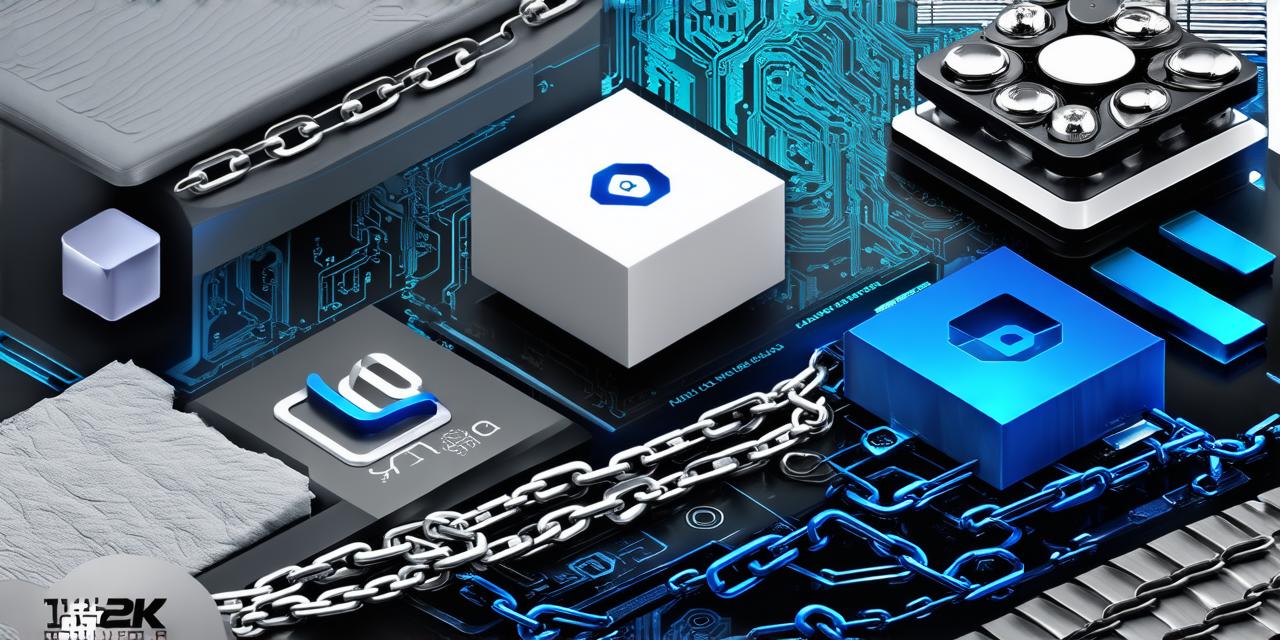
What is Blockchain?
Blockchain technology is essentially a distributed ledger or database that stores information in blocks that are linked together chronologically. Each block contains a unique set of data, and once a block is added to the chain, it cannot be altered or deleted. This creates an immutable and secure record of all transactions that occur on the network.
How does Blockchain work?
Blockchain technology operates on a consensus mechanism, which means that all participants in the network must agree on the validity of each transaction before it is added to the blockchain. This ensures that the ledger is accurate and free from fraud or tampering.
There are two main types of consensus mechanisms: Proof-of-Work (PoW) and Proof-of-Stake (PoS). In PoW, miners compete to solve complex mathematical problems in order to validate transactions and add them to the blockchain. They are rewarded with cryptocurrency for their efforts. In PoS, validators are chosen based on the amount of cryptocurrency they hold in their wallets, which gives them a greater stake in the network’s security.
One of the key features of blockchain technology is its decentralization. Rather than relying on a central authority to validate transactions and maintain the ledger, blockchain networks are run by a distributed network of participants who work together to ensure that the system functions smoothly.
Use Cases for Blockchain Technology
Blockchain technology has a wide range of applications across various industries. Here are some of the most popular use cases:
-
Cryptocurrencies: As mentioned earlier, Bitcoin is the most well-known example of a cryptocurrency that uses blockchain technology. However, there are many other cryptocurrencies, such as Ethereum, Litecoin, and Ripple, that have their own unique features and use cases.
-
Supply Chain Management: Blockchain technology can be used to track products from the point of origin to the final destination, ensuring transparency and accountability in the supply chain. This can help reduce fraud, increase efficiency, and improve customer trust.
-
Voting Systems: Blockchain technology can be used to create secure and transparent voting systems that are resistant to tampering and hacking. This can help increase voter confidence and ensure that elections are conducted fairly.
-
Smart Contracts: Smart contracts are self-executing contracts with the terms of the agreement between buyer and seller being directly written into lines of code. They can be used to automate a wide range of business processes, from hiring and payment processing to supply chain management and property transactions.
-
Healthcare Records: Blockchain technology can be used to create a secure and tamper-proof system for storing and sharing healthcare records. This can help reduce the risk of medical errors, improve patient privacy, and increase access to medical information.
-
Digital Identity Verification: Blockchain technology can be used to create a decentralized and secure system for verifying identity, eliminating the need for centralized identity providers like governments or corporations.
Real-Life Examples of Blockchain Technology in Action
Blockchain technology is already being used in a variety of real-life scenarios. Here are some examples:
-
IBM’s Food Trust: IBM has created a blockchain-based system for tracking food from farm to table, which allows consumers to trace the origin of their food and verify that it was produced using sustainable practices.
-
Walmart’s Blockchain Pilot: Walmart has partnered with IBM to create a blockchain-based system for tracking the supply chain of food products, which can help reduce food waste and improve food safety.
-
MediLedger: MediLedger is a blockchain-based system for tracking prescription drugs from manufacturers to pharmacies, which can help reduce the risk of counterfeit drugs and increase patient safety.
-
Provenance Project: The Provenance Project is a blockchain-based system for tracking the origin of diamonds and other luxury goods, which can help eliminate the use of conflict diamonds and improve transparency in the diamond industry.
FAQs
1. What is the difference between blockchain and distributed ledger?
Both blockchain and distributed ledger are terms that refer to a decentralized system for storing and sharing information. However, a blockchain is specifically a type of distributed ledger that stores data in blocks.
2. Is blockchain technology secure?
Blockchain technology is generally considered to be very secure due to its decentralization and consensus mechanisms. However, no system is completely immune to attacks, and it’s important to implement appropriate security measures when using blockchain technology.
3. Can I use blockchain technology for my business?
Yes, blockchain technology can be used in a wide range of business applications, from supply chain management to voting systems and beyond. However, it’s important to carefully consider the specific needs of your business and determine whether blockchain technology is the best solution.
4. What are some potential risks associated with blockchain technology?
While blockchain technology has many benefits, there are also potential risks that should be considered, such as the risk of hacking, the potential for fraud or abuse, and the possibility of legal issues related to the use of smart contracts or other blockchain-based systems.
5. How does blockchain technology compare to traditional databases?
Blockchain technology offers several advantages over traditional databases, including decentralization, immutability, and transparency. However, it may also have some limitations in terms of scalability and performance, depending on the specific use case.
Conclusion
In conclusion, blockchain technology is a powerful tool that has the potential to revolutionize the way data is stored and shared. Whether you’re a developer or a business owner, understanding the underlying technology behind blockchain can help you take advantage of its many benefits and stay ahead of the curve in this rapidly evolving field.
